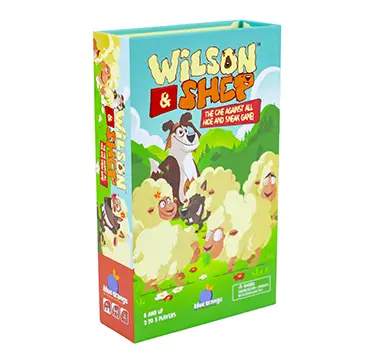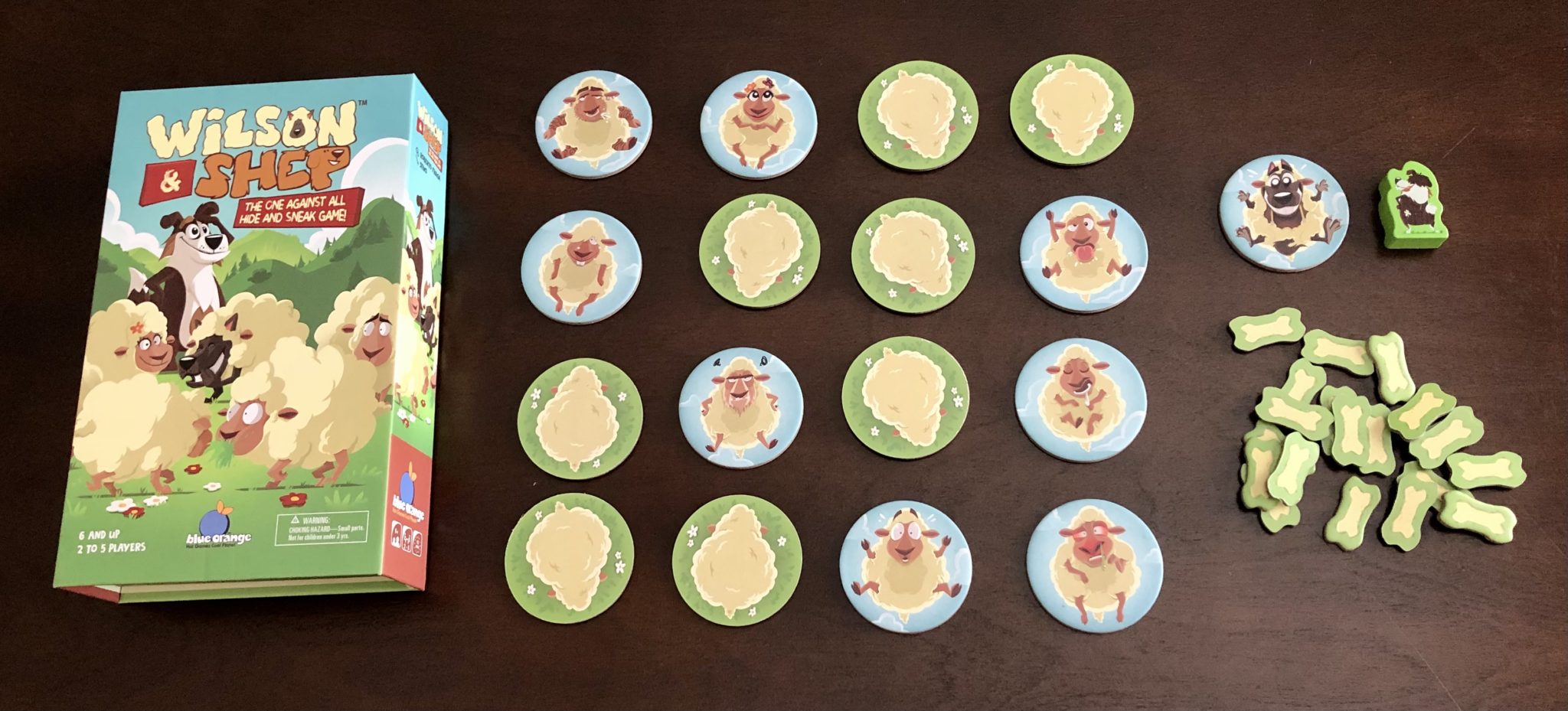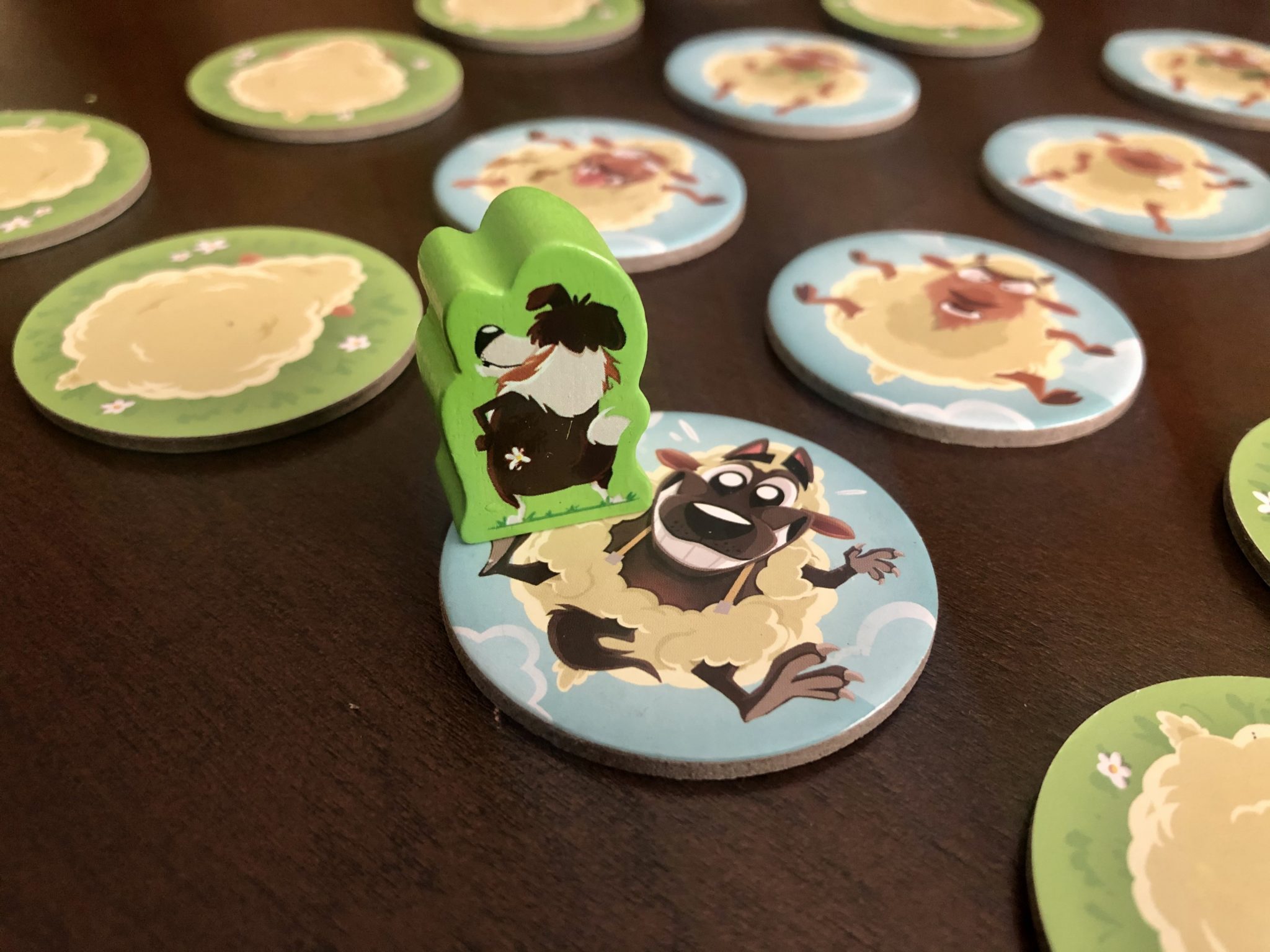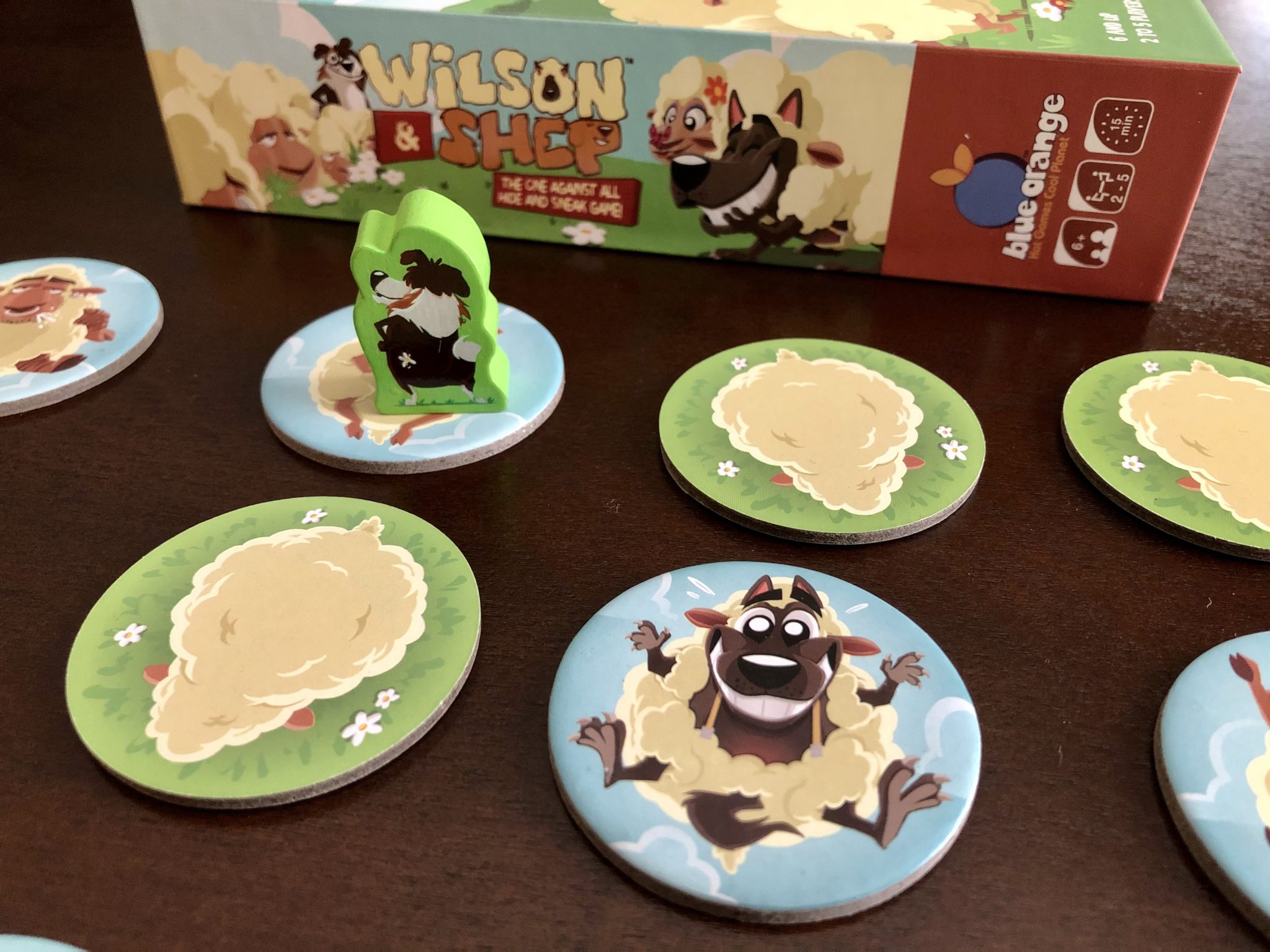
Wilson is a mischievous wolf who likes to hide from Shep, the vigilant sheepdog. Wilson & Shep is a 2-5 player kids’ game that plays in 15 minutes, and Blue Orange was kind enough to send me a copy to check out. This is a social strategy memory game that requires some focus and attention. It’s also a semi-cooperative game where one player plays against all others, with the opportunity for all players to play each role.
What’s In The Box?
- 1 wooden sheepdog token
- 16 sheep tiles
- 1 Wolf tile
- 20 bone reward tokens

How Does It Play?
In Wilson & Shep, one player will start in the role of Wilson the Wolf, who is hiding from Shep the Sheepdog as played by everyone else. Players take turns being Wilson so everyone will have a chance to hide from everyone else. All 16 sheep tiles are placed in a 4×4 grid with the tops of the sheep showing. Everyone who is playing as Shep will close their eyes and the player playing as Wilson will choose to exchange the Wilson tile with one of the 16 sheep tiles, placing the Wilson tile face down so the back matches the rest of the other tiles. When doing this they can also slightly move all other tiles so that other players don’t simply notice a change in position from 1 tile and know where Wilson is hiding. After saying “You won’t find me!” all other players open their eyes.
All other players will collectively decide which tile they want to place Shep on to start the game. After Shep is on top of a tile that is not turned over, the game will begin with Wilson’s turn. Wilson’s turn will always consist of that player swapping 2 tiles that are orthogonally or diagonally next to each other without looking or showing the other side. When swapping, these tiles can include Wilson’s tile or can be any random 2 sheep tiles. The tile Shep is on can never be swapped.

After the player controlling Wilson is done, one of the players controlling Shep will move one space from the current position, orthogonally or diagonally. When moving onto a tile that hasn’t been flipped over yet, it is immediately flipped over face up. If it is a tile that is already flipped face up, nothing happens and its Wilson’s turn again.
Play continues back and forth with Wilson swapping tiles and then Shep moving and possibly guessing where Wilson is. Each time it is Shep’s turn a new player will take the action, and when all players have moved Shep, the players will start a new cycle of controlling him.
The game continues with Wilson swapping tiles every turn and Shep flipping over sheep tiles until Wilson is found. Play continues until either 8 sheep tiles have been flipped over and Wilson is still hiding or when a player flips over a tile to find Wilson before 8 tiles are turned over. If Wilson is found the players controlling Shep each take a bone token. If Wilson is not found before 8 tiles are turned over, the player controlling Wilson received a bone token.
A new round is then started the same way except a new player controls Wilson. Players will play a certain number of rounds with everyone being able to play the role of Wilson evenly. Whoever has the most bone tokens at that time wins the game.

The Verdict?

Wilson & Shep was a big surprise for us. My kids absolutely love this game. Since receiving it, we have played it every day since. This would make sense as my kids love to play hide and go seek, and this game takes that game and places it on the table.
Wilson & Shep is very easy to learn and understand how to play it. It’s quick to play so kids don’t get too bored with it and it causes players too feel clever, either being able to hide without being found, or being able to find a player who is hiding.
My 3-year-old surprisingly could play the game. It’s still a bit confusing if he knows what he is doing but his actions are to throw us off his path, or if he truly forgets where he hid Wilson and is just moving around random tiles. Without knowing the answer, the game is fun with a player like this because you are trying to decide if they are moving the Wilson tile a lot or again randomly moving tiles.
Older players will understand a little bit more of the social interaction and the reasons why a player might be swapping certain tiles. If Shep gets close to Wilson, they might swap a tile to move away. Or maybe if Wilson isn’t close, they will swap 2 tiles acting as if they are trying to get away. There is a lot of deduction happening in this simple game, and that deduction is at a level that kids can understand it, but also older people, either kids or adults can still enjoy the mind games that can take place.
Wilson & Shep is one of the best kid games that I can play with both my kids and I and we all can enjoy it. Usually, the problem I find is that my kids don’t quite understand what they are doing and will either start tuning out or I find myself making decisions for them and essentially playing a multiplayer game solo controlling the actions for all players. But this game doesn’t have that problem, and my kids understand the game enough that they can even play it without me being around, which is awesome.
[rwp_box_criteria id=”0″]
You can grab Wilson & Shep at your Target or your FLGS, where it’s only about $15.
Images via Blue Orange Games and WB
Have strong thoughts about this piece you need to share? Or maybe there’s something else on your mind you’re wanting to talk about with fellow Fandomentals? Head on over to our Community server to join in the conversation!

